Blue and blue varieties of gladioli
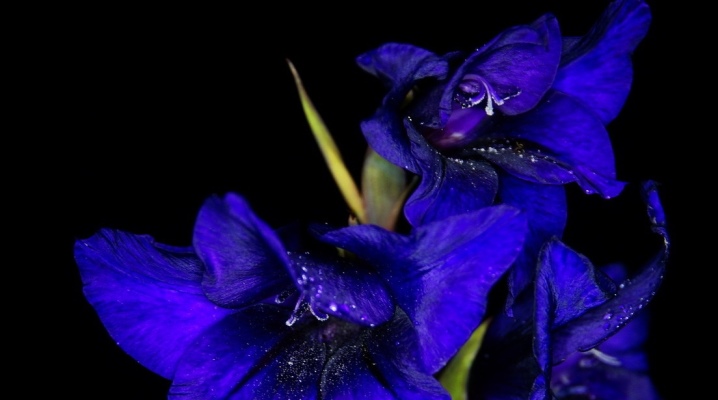
Blue and blue varieties of gladioli are the result of painstaking selection work of specialists and a real decoration of any garden. Among them there are flowers with a fairly pale, bleached color, brighter options with a purple or lilac tint. Saturated blue shades are quite rare and retain the characteristics of the parent plant only when reproduced by children. Paler tones are typical for the varieties "Blue Topaz" and "Blue Butterfly", "Blue Snowflakes" and "Blue Blizzard", "Blue Abyss" and other popular varieties.
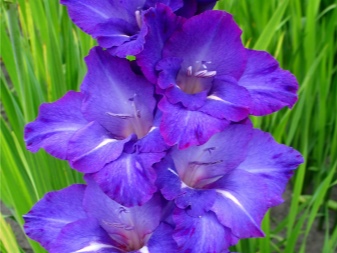
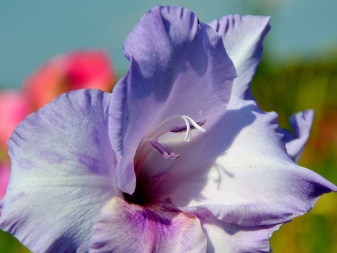
Peculiarities
Blue and blue gladioli are rare breeding hybrids that, when propagated by seeds, often do not give the desired result. You can get purple or crimson flowers when planting. In order for the plant to inherit the characteristics of the variety, it is recommended that reproduction be performed by children. It is worth paying attention to the peculiarities of domestic and foreign selection.
Russian blue and blue gladioli are characterized by the large size of the flower, the corrugated structure of the rosette. Peduncles are always high and strong. Some hybrids and varieties show stem heights up to 2 m and look great when cut. Foreign breeders often get by with simpler options. Their varieties are quite compact and focused mainly on landscape decoration.
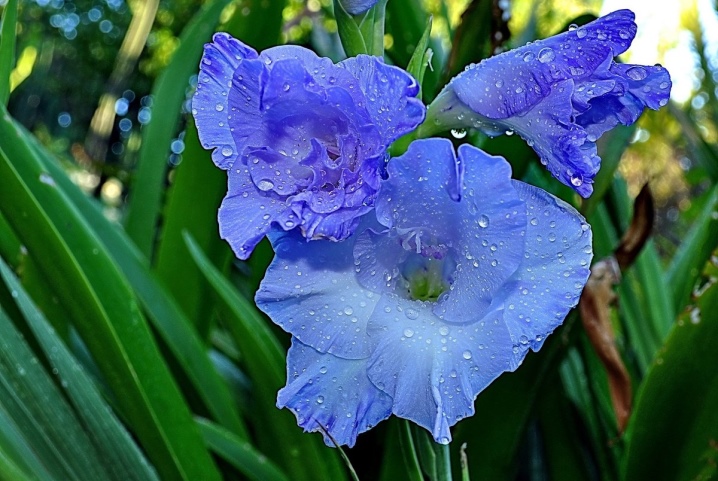
All blue and light blue gladioli belong to the same group as purple - there is no separate classification for them. When choosing a plant, it is worth considering that in the international plant designation system, it can begin with numbers from 1 to 5, which indicate the size of the flower itself. Further in the number should be the number 8, corresponding to the blue color. The color intensity can be:
- 0 - pale;
- 2 - light;
- 4 - main;
- 6 - dark.
If the variety is designated as 83 or 85, there is a border or spot on the flower. Further in the number, the year of selection, the timing of flowering, the degree of corrugation of the bud are indicated with a hyphen.
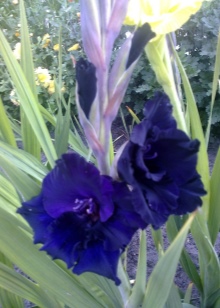

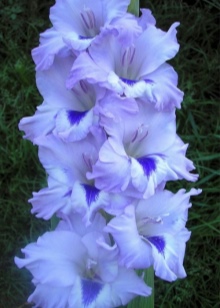
Overview of varieties
Among the most popular blue and blue varieties of gladioli are plants with different saturation of the tone of the petals. The following options are best suited for breeding and cultivation in central Russia.
- "Blue Topaz". Heavily corrugated early flowering gladiolus. Belongs to the group of monochromatic plants of the Russian selection, bred in 2006. The color is medium saturation, juicy and clean, blue. There are no spots or streaks on the flowers.
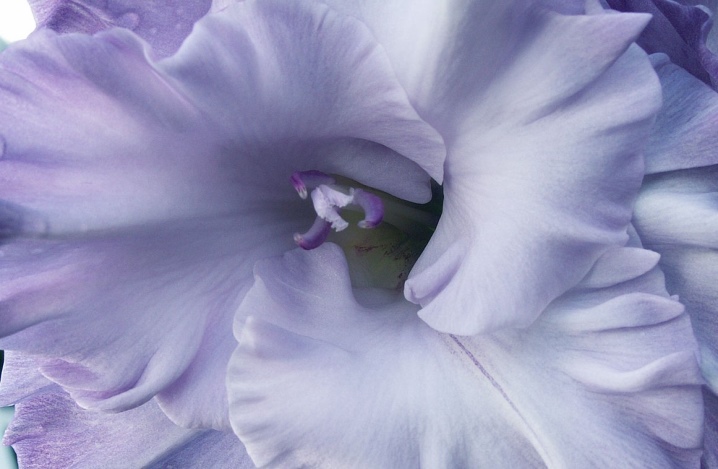
- "Blue Butterfly". Large-flowered variety of Russian selection, bred in 1998. The main tone is sky blue, there is a blue-violet spot at the bottom of the flower bowl. The variety is very decorative, with spectacular color transitions.
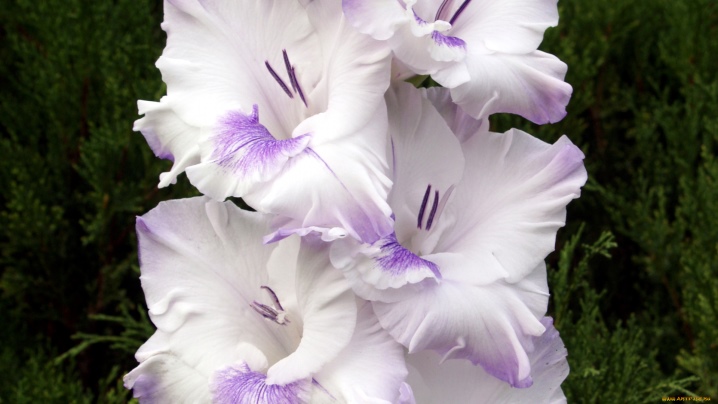
- "Blue Snowflakes". Variety with a highly corrugated flower bowl and early middle flowering. The blue color on a white background is present as a border. The formation of buds is two-row, their simultaneous number can reach 10. A plant of domestic selection, bred in 2004.
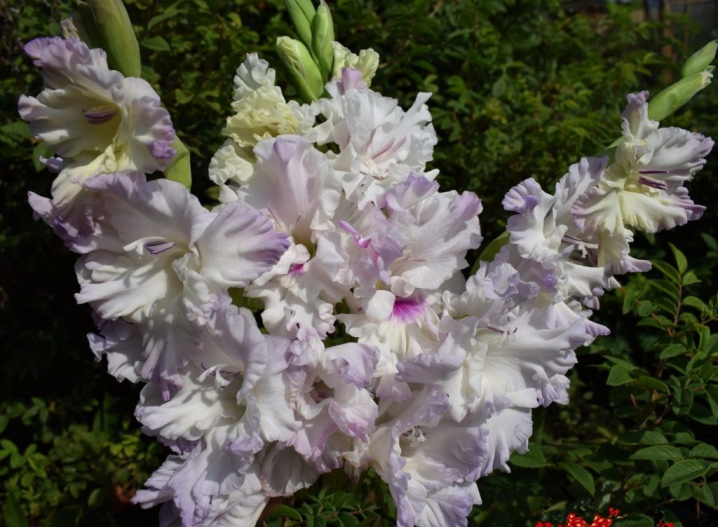
- "Blue Blizzard". The variety, bred in Russia, is distinguished by abundant flowering and simultaneous opening of up to 19 buds. The central part of the bowl is tinted with a lemon shade, the main petals are light blue, with a "northern lights" border. The plant does not differ in the large size of the flowers, but they are quite decorative thanks to the terry border around the edges.

- "Blue Abyss". Gladiolus with a clear blue tint of flowers, intensifying closer to the edges of the petal, corrugated.Plant of Russian selection in 2002. This variety has an unusual diamond-shaped flower shape, the formation of an ear is two-row, at the same time it opens up to half of the buds.
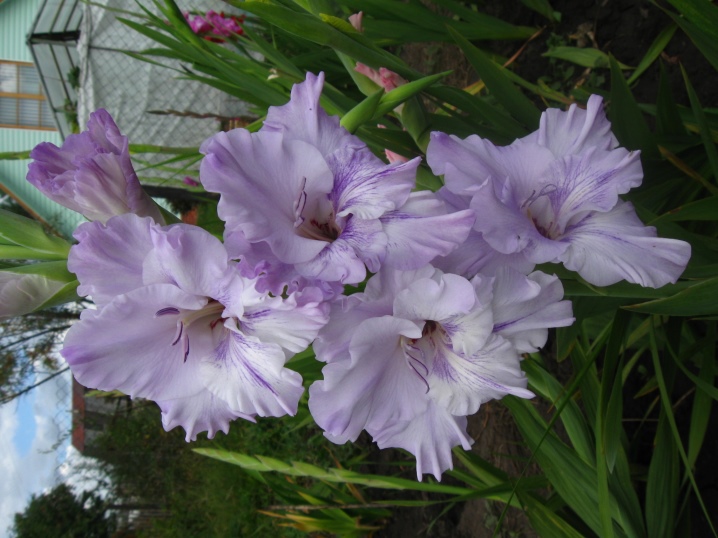
- "Blue Waterfall". Blue-violet gladiolus with a lighter throat. The variety was bred in 2008, corrugated, early middle flowering. The inflorescence is dense, up to 70 cm long, 24 buds are formed, up to 10 of them open at the same time.

- Sweet Blue. The description of this variety always indicates the tenderness of the color. The pale blue ruffled petals have a subtle purple border. The peduncle is long, the diameter of the open flower is up to 20 cm, the total height can reach 150 cm.
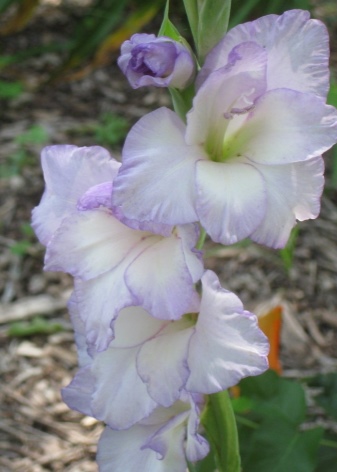
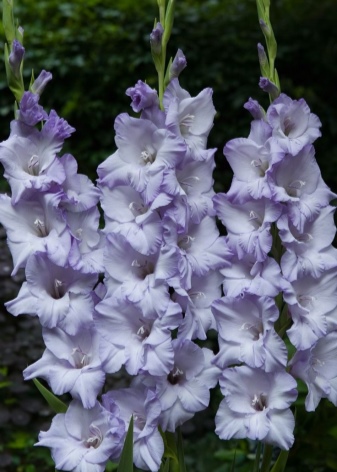
- Blue Lightning. A blue variety of gladioli with strongly corrugated edges of the petals. Differs in early flowering, up to 135 cm high, up to 18 flowers are formed on an ear, up to 8 of them bloom at the same time. The white spot that goes from the neck to the edge of the lower petal looks especially impressive.
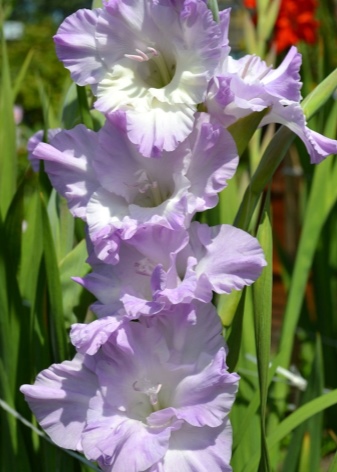
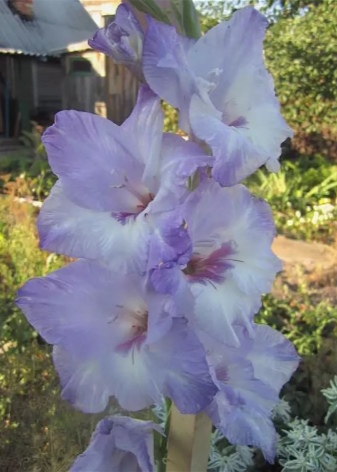
- Blue Express. Luxurious terry gladiolus with small flowers. The color is uniformly blue, towards the edges turns into violet. Up to 12 of 25 buds open at the same time.
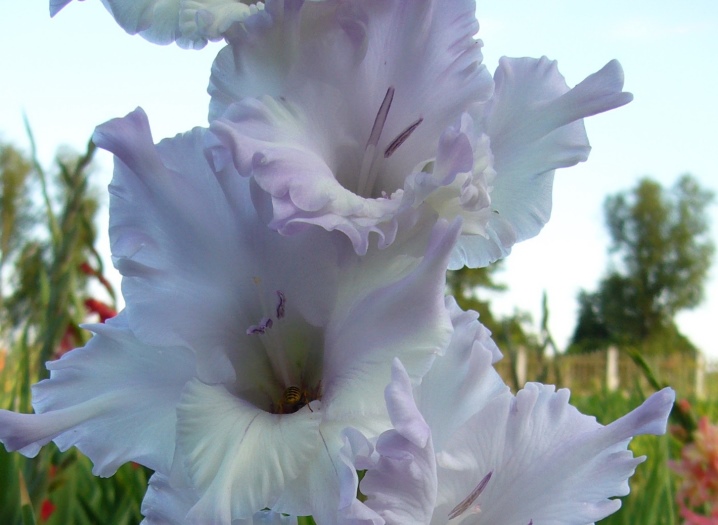
- Blue Mountain. Popular variety with rich, dark color palette of petals. It grows up to 110 cm, has the ability to change color depending on the intensity of illumination. White rays pass from the center to the edge of the petal.
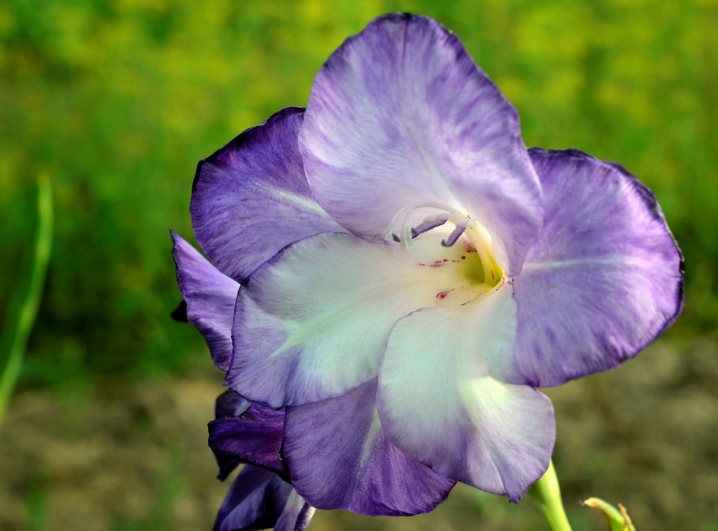
- Blue Bird. Large-flowered variety with blue-violet petals. Plants grow no more than 110 cm in height.
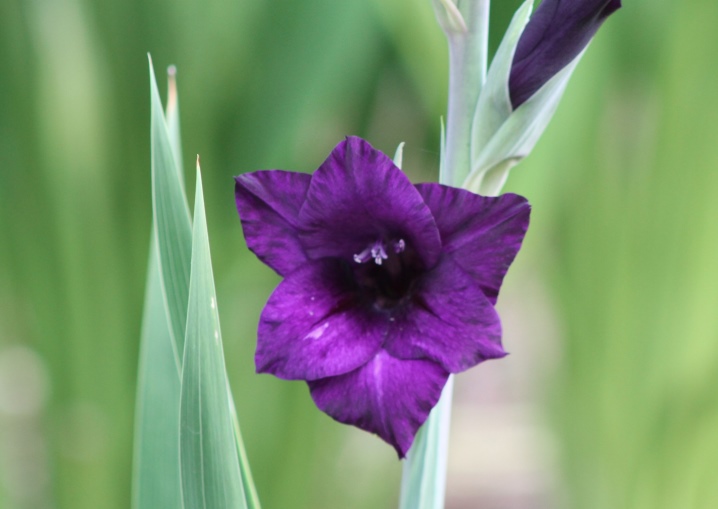
- Rhapsody in Blue. Purple-blue variety with rich color of petals. The flowers are large, with a white center, the diameter of the blossoming bud reaches 15 cm. The selection is Dutch.
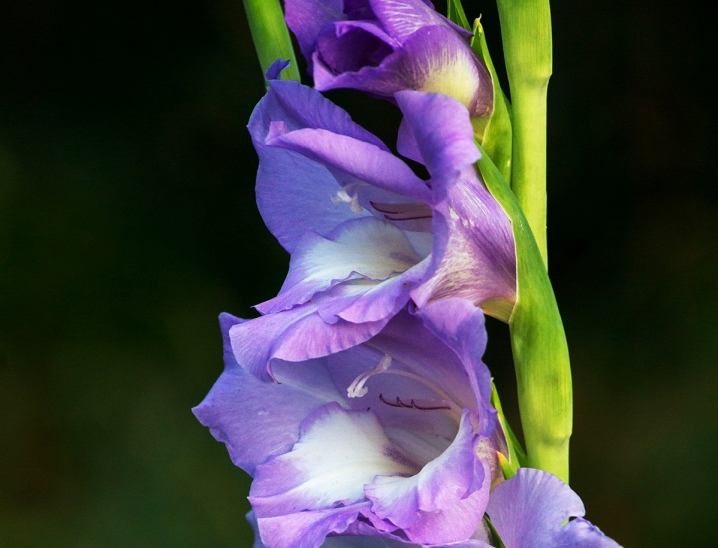
- Blue Frost. Large-flowered cultivar with a white cup base spreading over the lower petal. The edging is blue-violet. Terry variety, very decorative, early flowering.

- "Blue Tropic". Refined gladiolus with blue petals. Flowers are satin, dense, arranged in two rows, large. The color is uniform, pale blue.
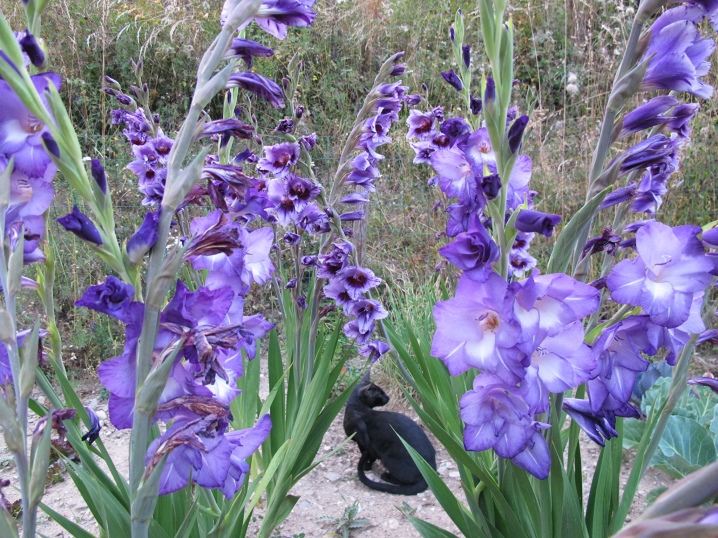
Care Tips
When planting unusual blue and blue gladioli, it is recommended to choose already acclimatized varieties of Russian selection. Even the most beautiful North American hybrids in unusual conditions can lose their decorative effect and not give full flowering. The best place to plant them is in a sunny area. Gladioli need a long daylight hours, otherwise they will later begin to form buds, and in the full shade of flowering, you can not wait at all.
Curvature of the stems is a fairly common problem in gladioli. To eliminate it, it is necessary to deepen the corms by 15-20 cm during planting. In this case, they do not have to be tied up, the stems will grow in a forward direction. It is possible to prevent the development of fungal diseases in a plant in rainy seasons if the soil is well drained and generously sprinkled with sand.
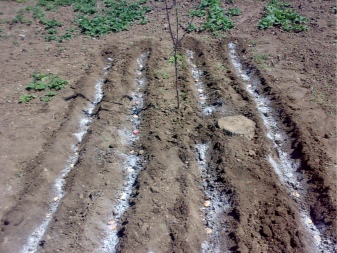
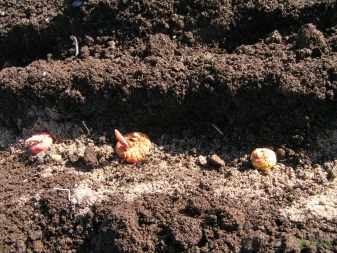
Gladioli need feeding. At the spring exit of the third leaf, 10 liters of water with a solution of superphosphate and nitrate (50 g each), potassium sulfate (25 g) are added per 1 m2. When the leaf outlet has 6 shoots, the feeding will have to be repeated, slightly changing the composition. For him, you will need 1 tbsp. l. ammonium and potassium sulfate, as well as a similar amount of superphosphate.
The most important feeding is during the budding period. Superphosphate in a volume of 50 g and potassium sulfate in half of its volume are added to 10 liters of water. This volume is enough to fertilize 1 m2 of plantings. Subject to the feeding regime, the plant will give abundant flowering even in unfavorable weather.

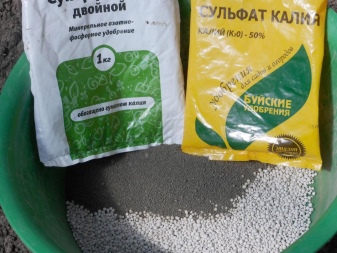
An overview of the varieties of gladioli in the video.







































































































The comment was sent successfully.